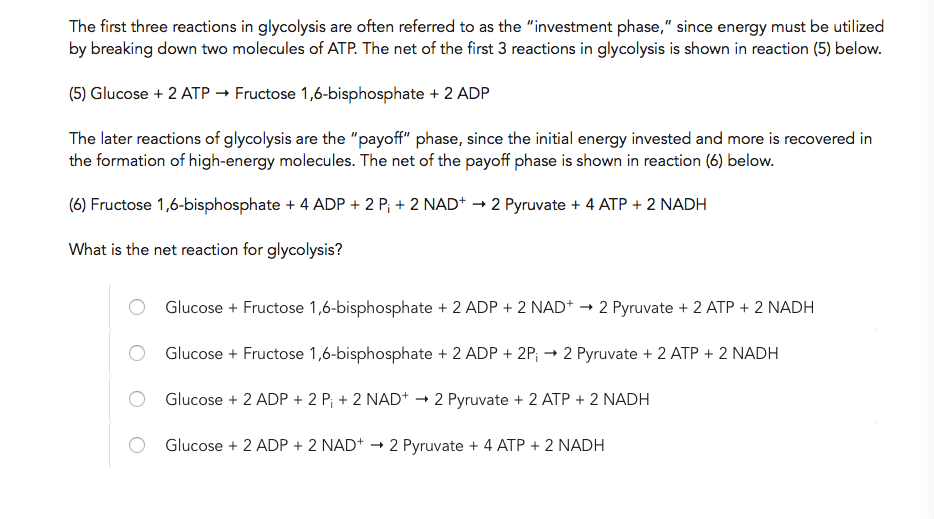BIOCH200 Lecture Notes - Lecture 1: Pyruvic Acid, Fructose, Hexokinase
Document Summary
Glycolysis is a catabolic and anaerobic pathway that converts one molecule of glucose to 2 molecules of pyruvate. In the process it generates atp and nadh from oxidation of the metabolites. Glycolysis taken place in the cytosol through a series of 10 reactions. In the process, one glucose is broken down to two pyruvate molecules. The reaction has two stages: energy investment: atp is consumed to activate glucose. All stages are 6 carbon sugars: energy pay-out: atp is produced and nadh. Regulated steps in glycolysis: glucose +atp glucose-6-phosphate + adp + h+ (enzyme: hexokinase, frustose-6-phosphate +atp fructose 1,6-bisphosphate +adp+ h+ (enzyme: Phosphofructokinase-1: phosphoenolpyruvate + adp + h+ pyruvate +atp (enzyme: pyruvate kinase) Atp consuming stages: (2 atp used in total: glucose to glucose-6-phosphate, fructose-6-phosphate to fructose bisphosphate. Atp generating stage: glyceraldehyde-3-phosphate + nad+ +pi 1,3-bisphosphoglycerate +nadh + h, 1,3-bisphosphoglycerate + adp 3-phosphoglycerate + atp, phosphoenolpyruvate + adp +h+ pyruvate + atp.



